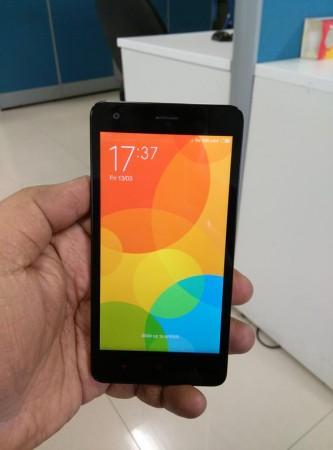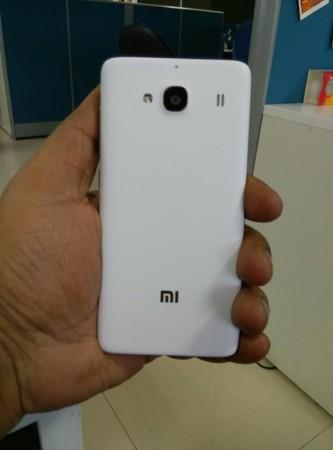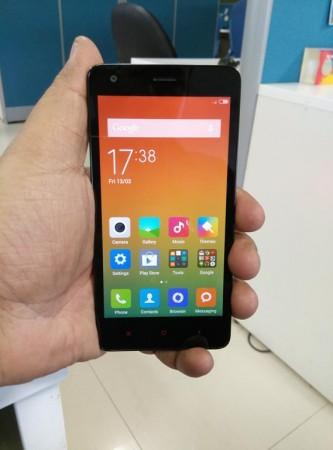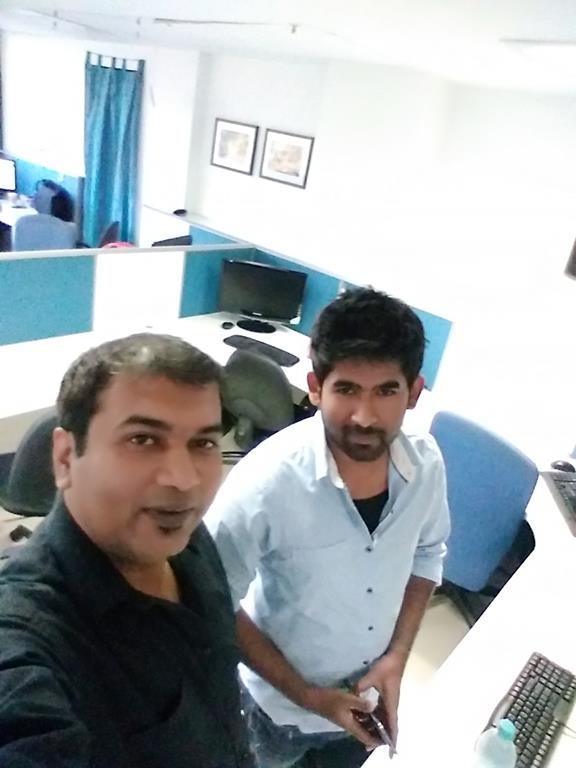
When Xiaomi entered the Indian market with its budget smartphone Redmi 1s and another device, Mi3, there was almost no competitor offering similar specifications and features at that price point. Naturally, Xiaomi tasted success within a short span.
But times have dramatically changed, and now most of the big smartphone makers like Motorola and Lenovo have put on at least one worthy competitor in the inexpensive budget segment.
While the Lenovo A6000 is the first 4G smartphone offered to Indian consumers for Rs. 7,000, the latest Moto E also comes for a similar price.
And now, Xiaomi launched its most-anticipated budget smartphone in India.
Dubbed Redmi 2, the Redmi 1s' successor features several modifications, yet is offered at the same price as Redmi 1s when it was launched. Though Redmi 1s received grand success in India, it had few flaws as well. Let's measure whether Redmi 2 repeats the same or lives up to our our expectations.

Built & Design
The Redmi 2 has been improved in many ways. The latest device looks much better than Redmi 1s. Xiaomi has modified the design in many ways, making it a better-looking device for its price. The matte white finish is less prone to fingerprints and smudges and feels durable in hand. The slightly curvy edges made the Redmi 2 more handy and easy to hold for long hours.
Measuring at 134x67.2x9.4mm and weighing 133g, the Xiaomi Redmi 2 is 1mm slimmer and 15g lighter than its older sibling. The 4.7-inch display shares the front with three red coloured physical touch buttons, front camera and an array of sensors including accelerometer, light sensor, proximity sensor and gyroscope.
The metallic silver volume rocker and power/sleep button sits on the right while the micro USB and 3.5mm audio out have been housed on the bottom and the top of the device respectively.
The 8MP camera at back shares its space with the LED flash; the speaker mesh and the Mi logo have been featured at the bottom. The back cover is removable and can be replaced with several options available on Flipkart. The built quality of Redmi 2 is impressive enough for its price.
Display
Boasting of a 4.7-inch 720P display that is identical to Redmi 1s, the Redmi 2 offers a laminated coating for reducing the gap between the LCD screen and the top glass. The advantage of putting this makes the Redmi 2 display more impressive for its colour reproduction capability with impressive viewing angles.
The display is bright and feels well in use but compromises a bit under direct sunlight. The 312ppi screen also comes with an ASAHI DragonTrail protection laid over the display.

OS and Interface
The Xiaomi Redmi 2 runs on Android Kitkat 4.4.4 with an overlaid proprietary MIUI6 interface. The interface resembles Aple's iOS 6 a lot and feels great in use with the bigger devices like Xiaomi MI 4 and Redmi Note 4G.
But in Redmi 2, the MIUI 6 feels a bit heavy to its specification, making the device under-perform a bit. The interface consumes 565MB of RAM memory out of 1GB, which causes the applications to take more time to open.
There was a noticeable lag too while multitasking between 5 or more open apps. We think Xiaomi may think about trimming down the MIUI interface in the next update to consume less memory for offering much smoother performance.
Performance
Xiaomi has featured a newer version of SoC comparing to its predecessor. The Snapdragon 410 is much capable SoC than the Redmi 1s's Snapdragon 400. The Snapdragon 410 SoC has a clock speed of 1.2GHz and capable with 64-bit computing.
Redmi 2 couples the SoC with 1GB of RAM memory, Adreno 306 GPU and 8GB of internal memory expandable up to 32GB. Out of 8GB, the Redmi 2 leaves 5.75GB of storage space to the user.
In our real-life testing, the Redmi 2 performed well through the browsing and multimedia playback. But in multitasking test, the Redmi 2 stutters occasionally, which we think is because of MIUI interface. Though the MIUI is undoubtedly one of the best Android interfaces available, it performs much better with a more powered SoC and at least 2GB of RAM.
In our synthetic benchmarking test, the Redmi 2 scored 20376 in Antutu Benchmarking 5.6.2. leaving its predecessor behind by a small margin. With GeekBench 3 benchmarking test, Redmi 2 scored 472 in single core and 1392 in multi-core test. In Quadrant Standard, the Redmi 2 achieved 11806. In the Vellamo MultiCore test, the Redmi 2 achieved 1247 in comparison to Moto G's 1357.
The Redmi 2 performed decently in our video playback test, with flawless streaming of 1080p videos in decent detail.
The Redmi 2 offers a lot of connectivity features including 2G, 3G, 4G LTE, WiFi, Bluetooth 4.0, Micro USB 2.0 and OTG support. Both the SIM slots featured in Redmi 2 are capable of handling 4G networks with Band 40 with 2300MHz TD LTE support and Band 3 with 1800MHz FDD LTE networks.
In our call test, the Redmi 2 performed well by providing decent call reception capability even in places where network goes through a bottleneck frequently. The GPS and Radio worked just fine.
The external speaker also performs loud with good overall quality.
Battery and Camera
Redmi 2 packs an 8-mgapixel primary and a 2-megapixel secondary camera. Based on BSI sensors, Xiaomi claims both the cameras have an aperture of f/2.2 to meet the optimum snapping purpose. The rear camera is accompanied with a LED flash with several settings features on the stock camera app.
The result images are apt in detail with decent presence of colour and saturation. The camera works usually fine in ambient lighting environment as well as in challenging light, we found a little yellow tint on the low light images tough. The amount of noise is less which is appreciable for a budget smartphone camera.
Powered by a 2200 mAh removable battery, the device lasted around a day from a fully charged state. While putting the brightness level to 'highest' and connected through 3G and WiFi, the Redmi 2 lasted around little more than 16 hours. But the pattern might reduce if you install 4G SIM into the device.
The Redmi 2 also supports Quick Charge 1.0 to speed up the charging process.
Wrapping Up
Available at Rs. 6,999, the Redmi 2 is priced similar to Lenovo's A6000, which is a great looking device with 4G support. Motorola's Moto E 2nd Generation and the newly launched Infocus M2 also count themselves as potent competitors of the Redmi 2, but they lack 4G connectivity.
The plus point of Redmi 2 is its 4G dual SIM support and a decent display. The camera and battery also perform well. On the other hand, the Lenovo A6000, Moto E 2nd Generation and Infocus M2 are all available in similar or at low prices with their own pros and cons.
Overall, the Redmi 2 is a worthy buy for its price; we recommend it for first time smartphone buyers. If you already own the Redmi 1S, then better stay with it or go for a little pricey but capable phones like Yu Yureka or Redmi Note 4G.



















